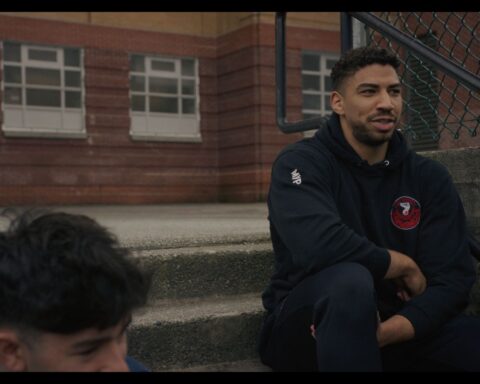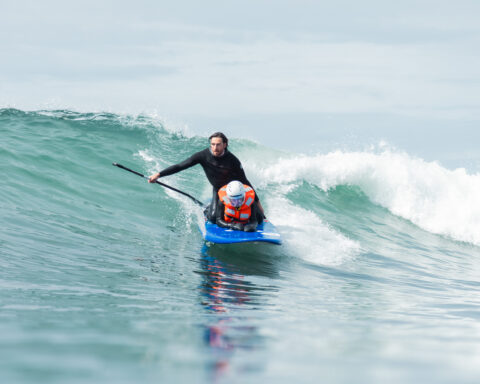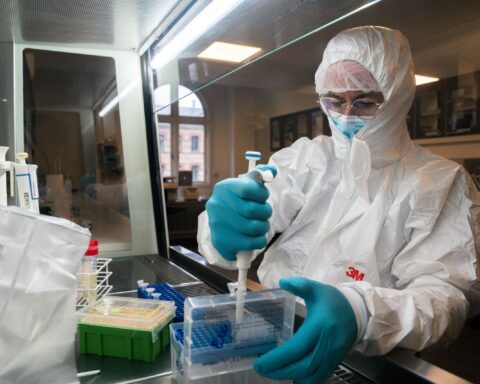Well, it may be the devil or it may be the Lord
But you’re gonna have to serve somebody – Bob Dylan
Many of Federico Fellini’s films were steeped in the guilt, fear, and mysticism of the Catholicism he grew up with in northern Italy. When Fellini was a child, priests told him that a wild woman called Saraghina was literally the Devil. In 8½, a fictionalized vision of the woman rhumbas on a beach for a gang of worshipful boys, their benevolent pagan goddess.
Fellini’s deep fasciation with the church has long seemed from another era, difficult for a modern audience to understand. But in doc-maker Federica Di Giacomo’s Libera Nos, the kind of ecclesiastical power and influence Fellini obsessed over appears to live on for many Italians. The doc focuses on Sicilians convinced they are possessed by evil and the exorcist priests who battle the demons.
During a recent interview at Hot Docs, Di Giacomo told me many viewers of her film are reminded of the 1950s. One of her main characters, Franciscan Father Cataldo Migliazzo is “Fellini-like” and also reminiscent of Don Camillo, the imposing priest in Giovannino Guareschi’s post-World War 2 short stories.
The film has “a kind of atmosphere,” Di Giacomo says, “as if we are in Sicily a long time ago. But the phenomenon (of possession and exorcism) is really contemporary. The film is about the future more than the past. This is a growing phenomenon, and it is something that is becoming bigger.”
Once she became aware of how widespread exorcism was becoming in the 21st century, Di Giacomo “chose to do a documentary because everything we know about the subject is monopolised by fiction, from Friedkin, and the other films, after The Exorcist.” Moreover, her goal was a documentary in “movie style with the possibility to go deeper with people, with their stories, and something not scandalous, but about everyday life.”
In Libera Nos, Cataldo and other priests are overwhelmed by the demand for their services. Huge numbers of troubled, desperate people are convinced the devil got hold of their souls. Why in God’s name is this happening now?
“I think that a lot of the therapeutic systems are hard to access,” says Di Giacomo. Moreover, “there is some kind of irrational part in us that shouts out to be heard.” Not everything can be explained, she adds.
Does Di Giacomo herself believe that the Evil One is making headway? “It’s difficult for me to think about one entity called Satan that is possessing you. But it’s also difficult for me to think that everything is psychological disease, and there is no spiritual disease. As the priests said to me, people go to the psychiatrist, they go to the magician, they go to other kinds of healers, and they spend a lot a lot of money. When they finish the money, they go to the priests.”
Like other viewers of Libera Nos, I thought that Di Giacomo was critiquing Father Cataldo and the other priests, seeing them as manipulators of the vulnerable. Some scenes seem ridiculous, for example when Cataldo performs an exorcism on the phone, confronting the demon in control of its victim.
“We are in 2017,” says the filmmaker. “People want to be helped in every moment of their life, in every hour, and they call. If they have a relationship with a particular priest, they even ask for exorcism by phone. The ridiculous thing is in our society. It’s not the priest.”
What about the house call scene in which priests incant over stuffed animals?
The fact is, Di Giacomo explains, “It is the people who are asking the priests to go into their houses.” The priests, whose methods have apparently been criticized by the International Association of Exorcists, “are very human. Father Cataldo is listening to everyone, twenty families a day, every day of his life. And he’s 80.”
One of the priests told Di Giacomo that they are the first to question demonic possession in people who come to them. “It’s very rare,” the priest explained, “but when I tell people they are not possessed, they get very angry—-and happy when I saw they are.” The priests offer the “possibility of being relieved, and they also offer meaning.”
Di Giacomo claims that once during “Pranic Healing” in England. “I had a girl working on me, and she said that some Spirit had come into my soul and attached itself.” She implies that we don’t give the spiritual dimensions of our lives enough attention. “Our society asks for us to be very rational, controlled, and so on. I think this is a problem now.”
When it comes to healing, what do doctors offer? Medications, 15 years of psychotherapy. No wonder sufferers desperate for relief seek out Father Cataldo
The final question remains. Why do all the demons in Libera Nos sound like What’s-His-Name in The Exorcist?
“It’s true,” Di Giacomo laughs. It seems like the supplicants got their idea of Satan from Friedkin’s movie. “In some way I thought that,” says the filmmaker. “But the problem is when you see very young people, it’s difficult to say they were auto-suggested. They haven’t seen the film. I asked them”
It is a cult film.
“Yes it is a cult film for people who go to the movies.”
Read the POV review of Libera Nos here.








